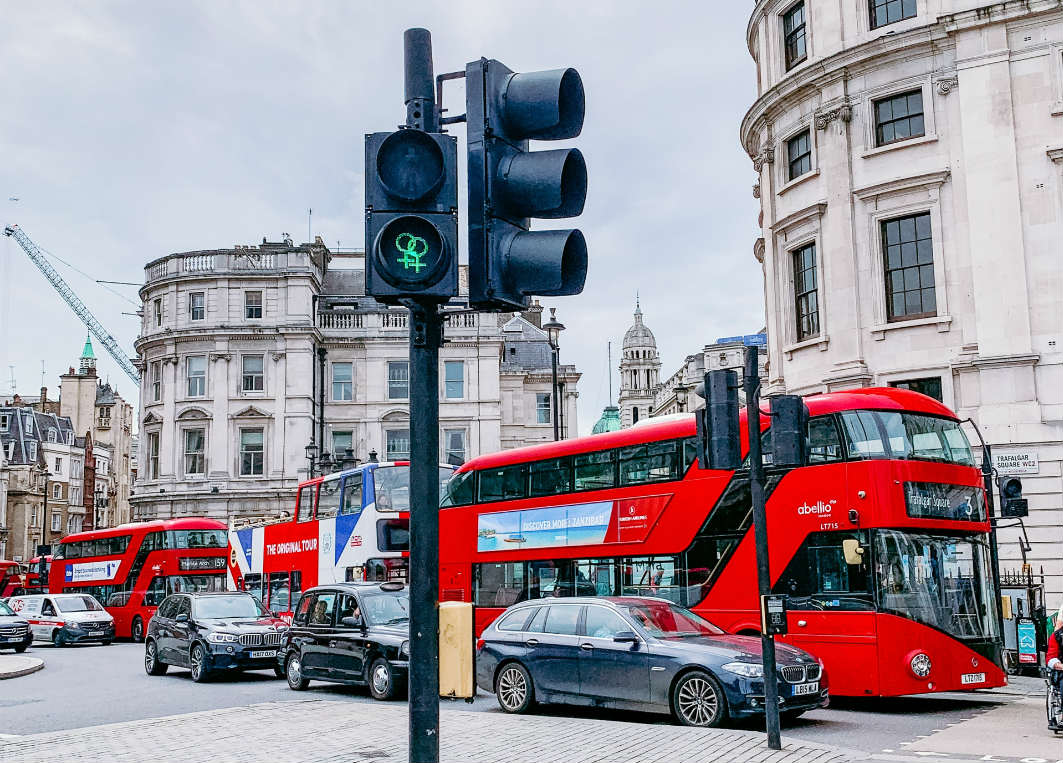10 problems with the petrol and diesel phase-out
The UK government recently announced that in order to reach its target of zero greenhouse gas emissions by 2050, it will be phasing out petrol and diesel engines on our roads. This means a ban on the sale of new petrol and diesel vehicles, starting in 2035. But there are many problems with the new policy – here’s our three-minute read:
1. A sales ban starting in 2035 won’t get us to net zero by 2050
The Committee on Climate Change has recommended that in order for the UK to reach net zero emissions by 2050, a ban on the sale of new petrol and diesel vehicles should start in 2030. Although 2035 is an improvement on the government’s previous deadline of 2040, it’s still too late. The government is apparently considering and consulting on an earlier ban, so it’s possible that it will happen by 2030 after all. But if not, the biggest problem with the policy is that on the timescales currently planned, it cannot achieve its stated purpose.
2. The sales ban could be counterproductive
The ban is on the sale of new petrol and diesel vehicles. You’ll still be able to drive your existing car from 2035 onwards, and you’ll still be able to buy a second-hand petrol or diesel car too. If traditional combustion engines are still the more attractive option as 2035 approaches, it’s quite likely that many drivers will bring forward any planned purchases of a new car in order to get one with a traditional engine before the ban comes in. This could mean a spike in sales for cars with petrol or diesel engines – the opposite of what the ban is intended to achieve.
3. Greener cars are still much more expensive
There’s a reason why only about 2% of the cars currently on British roads are powered by alternative fuel sources: electric and hybrid cars are much more expensive than their fossil-fuel-powered counterparts. There are government subsidies available to encourage people to buy greener vehicles, but, as we explained in our article about the impact of the petrol phase-out on businesses, they’re still twice or three times the price even with the subsidy. The recent budget committed to extending the Plug-In Grant, the main subsidy to incentivise new purchases of electric cars, but it will be cut from £3,500 to £3,000. (It was worth £5,000 when first introduced in 2011, but has been going down gradually since then.)
4. Tax policy is inconsistent with the phase-out
Taxes and subsidies are useful tools for government to shape public behaviour and decisions, and you would expect the forthcoming ban to be supported by financial incentives and disincentives. For example, Norway has made electric vehicles (EVs) exempt from VAT, made other taxes lower and made public charge-points free to use, while taxes remain high on vehicles that run on fossil fuels. As a result, petrol and diesel vehicles in Norway cost more both to buy and run, and EV sales have jumped from 6% to 55% of the new car market.
However, the UK government has instead prioritised the freezing of duty on petrol and diesel. Recent government analysis found that since the 2011/12 financial year, the cumulative loss to the Exchequer of successive fuel duty freezes has been £46.2 billion. This month’s budget included a commitment to keep it frozen. In other words, recent years have seen the UK government absorbing losses of tens of billions of pounds to keep the cost of driving petrol and diesel vehicles down, and there are no signs of this changing.
5. The charging infrastructure isn’t ready yet
For EVs to become more common than petrol and diesel vehicles, charging your car or van’s battery needs to be as convenient as filling up the tank. But the government’s most recent report on the issue acknowledges that it will need to triple the number of public charge-points before 2035. The recent budget included the welcome news that the government will provide £500 million over the next five years for electric vehicle charging infrastructure.
This will go a long way towards helping the government meet its target, but the problem remains that even this target was set with the assumption that most charging points will be private. In other words, the government is expecting businesses, other organisations and private individuals to create most of the charging infrastructure that needs to be in place by 2035. We don’t how the government is preparing for the eventuality that the private sector falls short of expectations.
6. How do we avoid “electric deserts”?
The current availability of charge-points varies greatly across the UK, with areas such as Wales and Northern Ireland described as “electric deserts”. There are promising signs of work being done to fill the gaps, such as the crowdfunder launched in February by Welsh co-operative TrydaNi. But the UK government’s decision to leave most of the infrastructure creation to non-publicly-funded organisations is risky. We may well see a continuation of the existing situation, in which EV provision is concentrated in the more populated and economically active areas such as London and south-east England.
7. Where will all the charging points go?
The government’s industrial strategy on EV charging sets out some proposed rules designed to encourage the creation of new charging points. For example, building designers will probably be required to include a charge-point in any new building with its own parking space, and buildings undergoing major renovations will probably be expected to take the opportunity to install the cabling for new charging points.
The problem is that many cars are never parked in private spaces. Around 25% of household vehicles in the UK are parked on the street, which means potential clashes between the charging point and other users of the space. Caroline Russell, London Assembly Member, told the Energy Advice Hub: “Londoners have contacted me concerned about electric charging points taking up valuable space on already narrow pavements. Transport for London have told me that 90% of on-street electric charging points are installed on the pavement. Parents with buggies, people using mobility aids and people who are visually impaired all find that these new obstacles are a hazard.”
8. There’s no exception for hybrids
The 2035 ban makes no exception for hybrids, which have both an electric motor and a petrol or diesel engine, despite their greater fuel efficiency. This may be because the true carbon footprint of a hybrid isn’t fully agreed on. Production of hybrids tends to be more carbon-intensive than production of traditional cars, although over a lifetime of greater efficiency it will make up for this. However, this is inconsistent with the government’s previous policy of subsidising hybrids through its grant scheme for low-emission vehicles, currently still applicable to certain models of car.
9. Electric vehicles still produce emissions and damage the planet
Although an electric car doesn’t produce any tailpipe emissions, they’re not actually carbon-zero. If the electricity they run on is from non-renewable sources, running an electric car still involves burning fossil fuels. The production of electric vehicles also generates more greenhouse gas emissions than manufacturing traditional vehicles, although they more than make up for this over a lifetime’s use. Lastly, the extraction of lithium comes with its own environmental cost. As well as being emissions-intensive process, it has a very damaging impact on the local area. For example, South America’s “Lithium Triangle” is already drought-prone, yet lithium mining is taking half a million gallons of water for every tonne of lithium and farmers are seeing a devastating impact on their crops and livestock. Elsewhere in the world, lithium extraction has poisoned water supplies and killed fish.
10. It still pushes us all into cars
A cheaper and easier way to reduce petrol and diesel emissions would be to reduce overall use of private motorised transport, but the push towards electric vehicles seems to be about swapping one kind of car for another rather than any real changes in our travel habits. Most journeys made in the UK are less than 5 miles, which means that healthy people could ditch the car for many trips if they had a safe, convenient and pleasant way of getting around without it. Unfortunately, we’re not prepared to pay for the infrastructure that would make those journeys appealing; funding for active travel is about 1.5% of transport spending in England. (Experts say that to change people’s travel behaviour, 10% should be the minimum.)
Active travel funding tends to pay for itself in reduced mortality, better health, reduced congestion and so on. One Scottish study estimated that if 40% of car trips under five miles were replaced with cycle trips, Scotland would save £2 billion a year.












